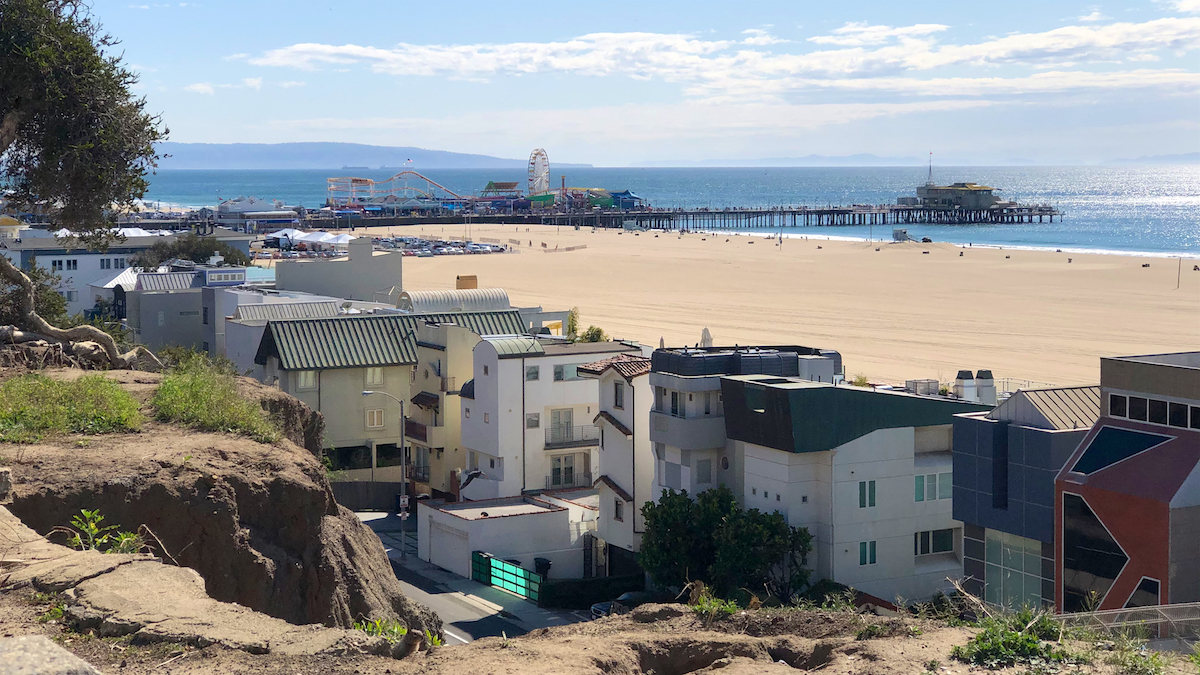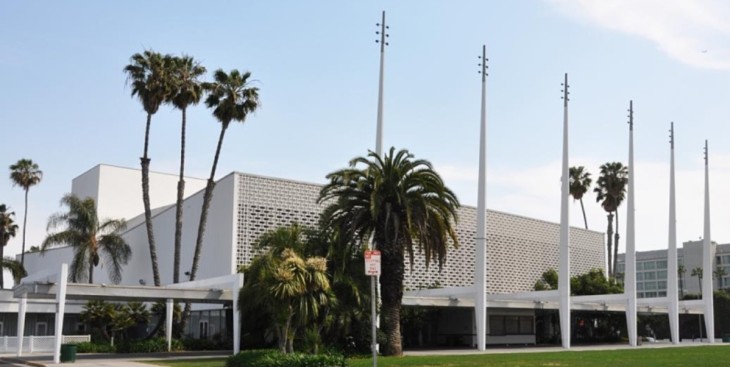
The new era of hot weather extremes has made coping with heat increasingly important. A recent paper by NASA’s Jet Propulsion Laboratory said: “These changes in Los Angeles climate will surely become a problem for residents of the city. A higher risk of heat-related deaths, an increase in wildfires, and more strain on water, power, and agriculture may be direct consequences of the rising Los Angeles temperatures.” [https://climate.nasa.gov/files/LAHeatWaves-JournalArticle.pdf].
We are fortunate in Santa Monica: our proximity to the ocean results in lower temperatures than the rest of the Metro area. Still, heat waves are becoming longer lasting and more frequent, and cause discomfort–and in some cases health hazards–to many of the city’s residents who live in apartment buildings. Although renters can’t make alterations to their buildings, they can take a variety of measures to help overcome the heat. Here is a small list of actions that renters and condo dwellers can take to mitigate the effects of a heat wave when it becomes problematic. Some are obvious or self-evident, but in their totality can make a big difference in comfort and safety.
1. Turn off the lights.
This is an important part of an effort to eliminate heat-making sources in the home. Turning off lights–and especially incandescent light bulbs–can make a difference during a heat storm. LED lights, and even compact fluorescents, do not add much heat. But incandescent bulbs, which are only 2.6% efficient, can waste more than 90% of the energy as heat. [https://temperaturemaster.com/does-light-bulb-make-room-hotter/]
Keep in mind: an incandescent light bulb’s glass surface can reach over 250 degrees. Best to turn them off altogether (and replace with an LED if possible).
2. Take advantage of air movement.
After sunset (or even during the day, if you’re in a breezy area), open the windows and let the natural breeze blow out the heat. Open a window and a door at opposite sides of the apartment to create cross ventilation. Air will enter one side and blow the inside heat out the other. Make sure interior doors are open to let the air push through.
If the apartment has windows only along one side, open at least two windows, and place a fan to push the air out of one of them. Cooler air will enter from the other window. If you have double-hung windows, lower the top panel and raise the bottom one. This will help create a convection loop: cooler air will enter at the bottom, and warmer air will exit at the top.
3. Close the Shades.
In Santa Monica, the sun is at its hottest at midday and during the afternoon, when it shines from the south and west. If you have south or west-facing windows, close the shades or curtains along those sides of your unit. If you don’t have shades or curtains, improvise, by hanging sheets, or taping cardboard or foil to the windows. Blocking the sun on those two sides can reduce interior temperatures by 20 degrees in the middle of the day.
Where is the south and west? If you face the ocean, you are looking toward the south-west. So any windows that point toward the Pacific Ocean, or toward Venice and Marina Del Rey, are candidates for blocking during a heat-wave afternoon.
4. Go to a Neighborhood Cooling Center
If the heat becomes too much to bear, or threatens one’s health, it is best to leave the apartment and head toward a neighborhood cooling center. In Santa Monica, the city recommends going to the local library.
Most of the Santa Monica library locations are currently closed because of the COVID-19 epidemic. As of this writing, the Main Library is open four days a week (and the first Saturday of each month), and the Ocean park branch is open with pre-authorization. The remaining branches are, for the time being, closed. The closures might change, however, in the event of a heat wave, so it is best to check the SMPL web site for announcements: https://smpl.org/reopening/
5. Save Your Medicines and Yourself.
Many medications deteriorate in the heat and lose their effectiveness, particularly above 86 degrees. During a heat wave, it is especially important to keep medications cool and dry. Many medical professionals recommend that you take medications out of bathroom medicine cabinets and above the fridge (where it can be very warm), place them in a sealed baggie and put them inside the refrigerator. In case of a power outage, however, a refrigerator can get warm in about four hours, so it’s a good idea to keep cooling packs and insulated sandwich bags available to help provide an additional layer of protection for one’s medicine.
In How To Prepare for Climate Change, the writer David Pogue points out that many people–especially seniors–take medications that can change how people perceive temperature. Many widely-used medications, such as beta-blockers, can fool people into thinking the temperature is lower than it is. In other cases an illness itself–such as diabetes– can interfere with one’s sense of thirst, leading to extreme dehydration. All of this can create a very dangerous situation, where a person is unaware of the high temperature until it is too late. Folks taking medication need to be especially aware of hot-weather reports. If you know a senior who takes such medications, it is best to check up on them regularly during a heat wave. If you are taking them yourself, consider creating a “buddy system” with a friend, where each person checks up on the other.
6. Personal Actions to Feel Cooler.
When it gets extremely warm, including in the evenings, a variety of small individual actions can help provide relief. These include:
-wet or cool bedsheets (wring them out before using); even placing dry bedsheets in the freezer can help;
-cooled liquid containers: cold-water bottles, refrigerated cold packs, unconventional pillows (such as bean- or buckwheat-filled cushions); all can help at night;
-short cool showers.
-personal fan and a wet rag: place a small wet rag on your forehead or arms, and sit or lie in front of a small personal fan. The evaporation will immediately lower your perceived temperature. Some people like spraying rubbing alcohol on the skin for instant cooling in front of a fan. Be aware of the skin-drying effect of this method, but it’s usable in an emergency.
-sleep on the floor: hot air rises, and cool air remains at lower levels. When all else fails, putting a mattress on the floor can result in a cooler sleeping environment than a raised bed.
7. Be Aware of Other Environmental Factors.
The Santa Monica Office of Emergency Management’s web site has a good list of suggestions for dealing with heat-related injuries, from sunburn to heat exhaustion:
One counterintuitive fact: large increases in West Nile Virus infections often occur during droughts that frequently accompany heatwaves. Experts are divided on the root causes, which may range from the prevalence of stagnant water sources, to an increase in bird illnesses that attract mosquitoes. So during a heat wave (especially during a drought), make sure to remove any pools or open containers of water around the apartment, especially on decks and balconies. These can be breeding grounds for mosquitoes. Dawn and dusk are the active times for mosquito action.
Daniel Jansenson, Architect, Building and Fire-Life Safety Commissioner
Santa Monica Architects for a Responsible Tomorrow: Ron Goldman, Architect FAIA; Dan Jansenson, Architect, Building & Fire-Life Safety Commissioner; Mario Fonda-Bonardi AIA, Planning Commissioner; Robert H. Taylor, Architect AIA: Thane Roberts, Architect; Sam Tolkin, Architect; Marc Verville accountant ret.; Michael Jolly, AIRCRE


























